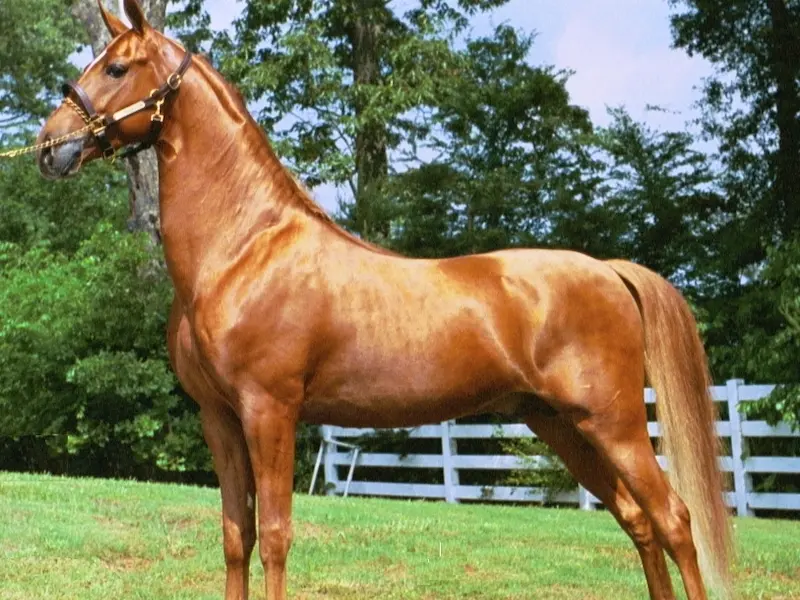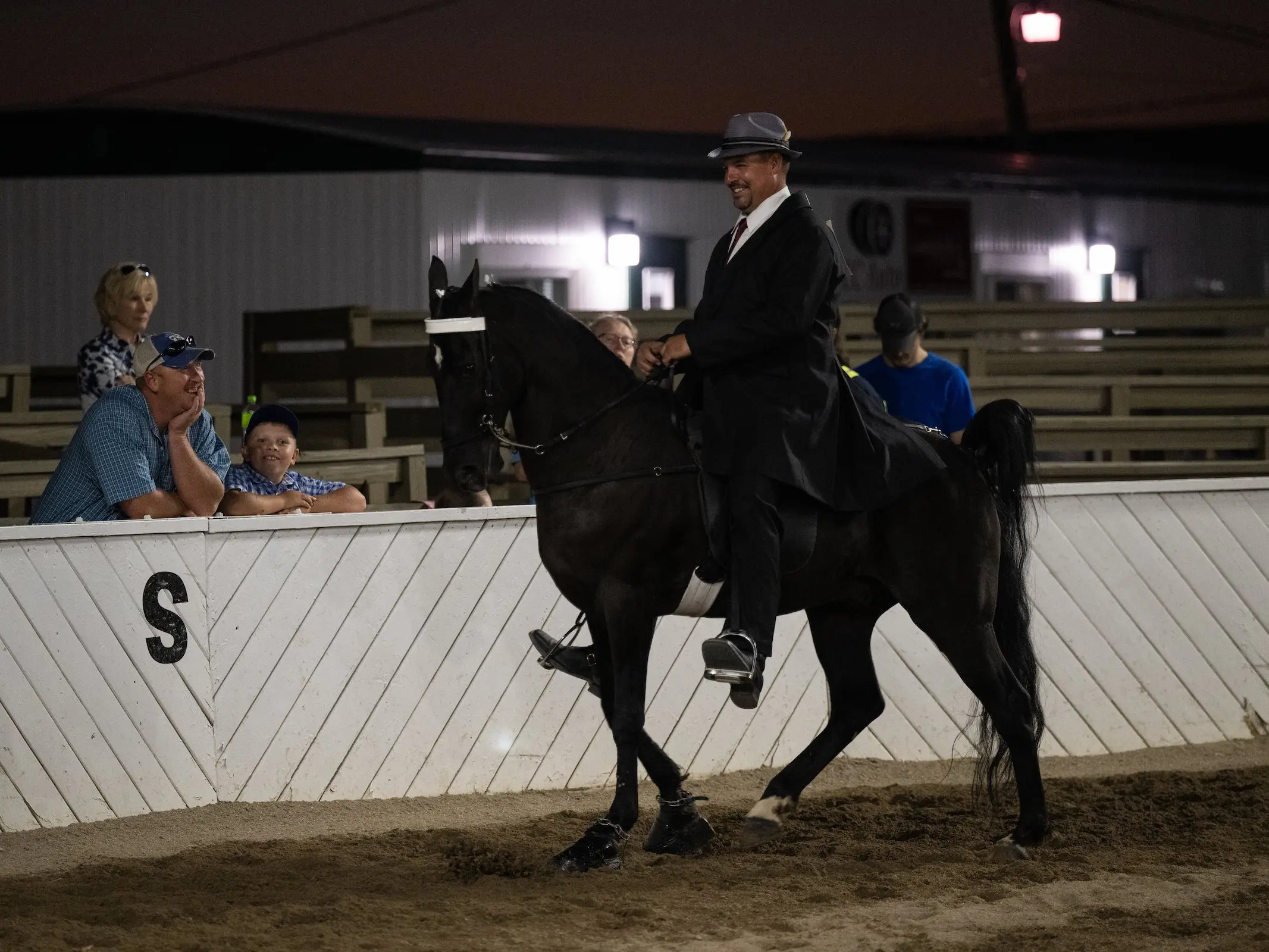Intro
Also known as the Kentucky Saddler and American Saddle Horse, this breed was developed in Kentucky as a stylish utility horse for plantation owners of the south. Their easy gait made hours in the saddle easier and their mild temperament made them easy to manage.
Origins
The colonization of North America began during the 17th century and colonists that came often brought livestock with them. Foundations for the Saddlebred began with imported Galloway and Hobby Horses brought by British and Irish Colonists. Not only were these animals sturdy, but they were naturally gaited making them easy to ride.
Once in America, these breeds were found to be useful and selective breeding programs began. One of the results was a superior quality animal called the Narraganset Pacer (developed in Rhode Island and Virginia).
Introducing Thoroughbred
As with many North American breeds, the introduction of Thoroughbred blood was inevitable in Saddlebred lineage. The first Thoroughbreds were imported to the American colonies early the 18th century, where they provided a dose of refinement and speed to the Pacers. The result of this mix became its own type, called the American Horse – combining the best elements of both foundation breeds.
War Horse
The American horse was used in the Revolutionary War and afterwards a large number were brought to Kentucky to be used as seed stock. After the war, saddle horses were in high demand in Kentucky and they played a large role in the settlement of the upper Ohio Valley. As they spread, animals from a variety of southern states contributed to their bloodlines.
During the Civil War, their tireless service earned them acclaim as a breed. Confederate animals were almost exclusively of this American-type stock – many of the famous Generals rode American horses into battle.
The Show Ring Dictates
After the Civil War, horse owners began to enter the show ring with their showy saddle horses. Breeding began to change as needs changed, saddle horses didn’t need to be bred strong for battle anymore, breeding priority quickly became refinement for show.
In 1891 the National Saddle Horse Breeders Association was formed, making it the first national association for an American-developed horse breed. In 1899 the organization changed their name to the American Saddle Horse Breeders Association to clarify the breed’s name as the American Saddle horse, rather than just the Saddle horse.
Modern American Saddlebred
After WWI some American Saddlebreds were exported to South Africa and today they are the most popular non-racing breed in the country. During the 20th century the breed has grown even more in popularity and breeding has continued by enthusiasts (including William Shatner) for a variety of purposes from the show ring to pleasure riding.
Features
Average height 15 – 16 hands
Beautiful and stylish
Gaits are easy with a high, true, smooth action
Physique
Head is finely chiseled with a lean, smooth jaw
Eyes are bright and set wide apart
Ears are sharp and dainty
Neck is medium and arched
Short, strong backs
Compact body with deep girth
Tail is high set, proudly carried and flowing
Clean, flat-boned and very straight legs
Well-formed feet
Traditional Colors
All colors are acceptable.
Temperament
Even temper
Willing and intelligent
Smart and obedient
Friendly and gentle
Use
Saddle horses
Show horses
Pleasure riding horses
Work horses
Helpful Links
*All links open in a new window
American Saddlebred Horse Association
American Saddlebred Horse Association of Canada
American Saddlebred Horse Museum
More Images


